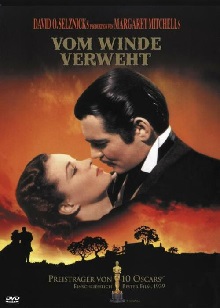
Max Steiner was born in Vienna’s Leopoldstadt in the Hotel Nordbahn and came from a wealthy theatre dynasty that was friends with many composers. Sein Großvater Maximilian Steiner war unter anderem Direktor am Theater an der Wien, und sein Vater Gabor Steiner arbeitete in Wien ebenfalls als Theaterdirektor. Mit einem reichen Erbe an Opern und Symphonien aufgewachsen, entwickelte sich Steiner zu einem musikalischen Wunderkind; im Alter von 13 Jahren absolvierte er die kaiserliche Musikakademie, schloss den Kurs in einem Jahr ab und erhielt die Goldmedaille des Kaisers. Mit 14 Jahren war er bereits Komponist und mit 16 Jahren Dirigent. 1905 übersiedelte Steiner von Österreich nach England, wo er bis 1914 als Dirigent am Theater Seiner Majestät tätig war.
At the outbreak of the First World War, he emigrated to America, where he became involved with Broadway musicals and operettas. One of his most successful jobs in America was composing the music for the screening of the silent film The Bondman (1915); he became a friend of William Fox, the film’s producer, giving Steiner early access to the Hollywood that was to occupy him so profitably in later years. In 1929 he was brought to the fledgling RKO Radio Studios to direct the film version of Ziegfeld’s “Rio Rita” (1929). Steiner, who was always convinced of his talents, was realistic enough to understand that he was hired by RKO because he cost only a tenth of what someone like Leopold Stokowski would charge. During his time at RKO, he developed his theory that music should be a function of the dramatic content of a film and not just background filler.
His scores for films such as Symphony of Six Million (1932), The Informer (1935) and especially King Kong (1933) are carefully integrated works that comment on the visual images, enhance the action and heighten the dramatic effect. While Steiner’s critics referred to his compositional technique as “Mickey Mousing” (in reference to the music in animated films), producers, directors and stars relied on Steiner to make a good film better and a great film greater. After 111 films at RKO, Steiner was hired by David O. Selznick, who commissioned the composer to score Gone with the Wind (1939). Practically 75 per cent of this 221-minute epic required some kind of music, and Steiner rose to the task with a work many consider his best. One concept refined in Gone with the Wind was to give each important character their own musical motif – quite an undertaking considering how many speaking parts there were in the film. It was at this time that Steiner began working at Warner Bros. where he composed the studio’s famous opening logo fanfare and also wrote evocative music for classics such as “Now Voyager” (1942), “Casablanca” (1942) and “Mildred Pierce” (1945).
A proud, vain man, Steiner was often taken for a ride by his fellow composers, but at the Oscars it was usually Steiner who had the last laugh. He remained active until 1965, contributing scores to The Caine Mutiny (1954), The Searchers (1955), A Summer Place (1959) and many other films. ( Source: All-Music / Austria-Forum)
Max Steiner’s Works for Wind Orchestra






